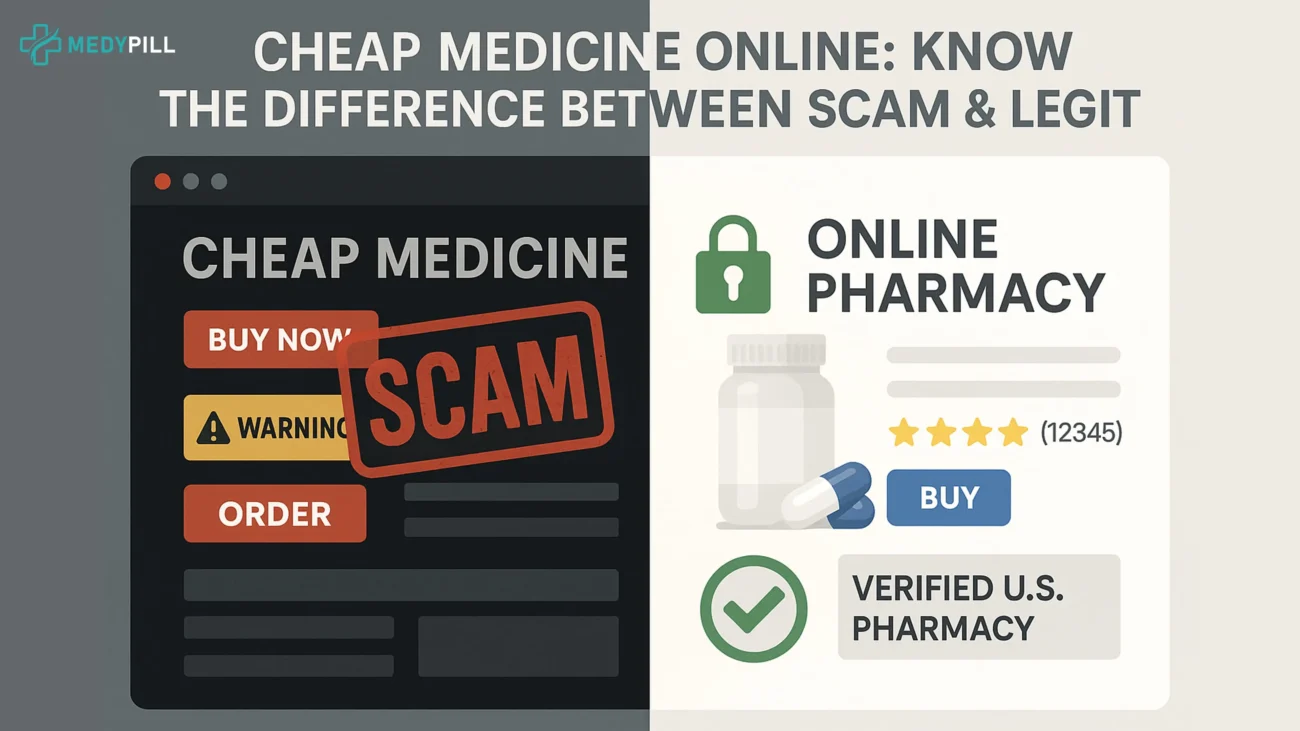
How to Buy Cheap Medicine Online Safely
You can buy cheap medicine online safely from reputable, licensed stores like Medypill.com, Walgreens, or CanadaDrugs.com, but only if you know what to look for.
In 2023, generic medicines accounted for 91% of all U.S. prescriptions, showing how much people rely on lower-cost options. Still, not all online sources are safe.
This guide helps you find trusted pharmacies and avoid scams.
Why Cheap Medicine Online Is Booming (But Risky)
Cheap medicine online is booming because it saves money and time. As of 2023, 52% of American adults have bought medicine online, up 17% since 2020.
People are mainly driven by convenience (60%) and cost savings (56%).
However, this growth comes with risks. The World Health Organization reports that 1 in 10 medical products in developing countries is substandard or fake.
Worse, about 50% of medicine sold on rogue pharmacy websites is counterfeit.
The NABP also found that 96% of online pharmacies operate illegally without requiring a prescription.
- To stay safe, it’s important to choose trusted, verified pharmacies and always check credentials before you buy.
Is It Legal to Buy Cheap Prescription Drugs Online?
Yes, but only if you follow strict rules. It is legal to buy prescription drugs online only from licensed pharmacies that:
- Require a valid prescription
- Are based in the U.S.
- Employ U.S.-licensed pharmacists
- Display a real address and phone number
It is illegal to buy prescription-only drugs without a prescription or from unlicensed foreign websites. Doing so breaks U.S. federal law and could expose you to unsafe or fake medications.
Signs of a Safe Online Pharmacy (Red-Flag Checklist)
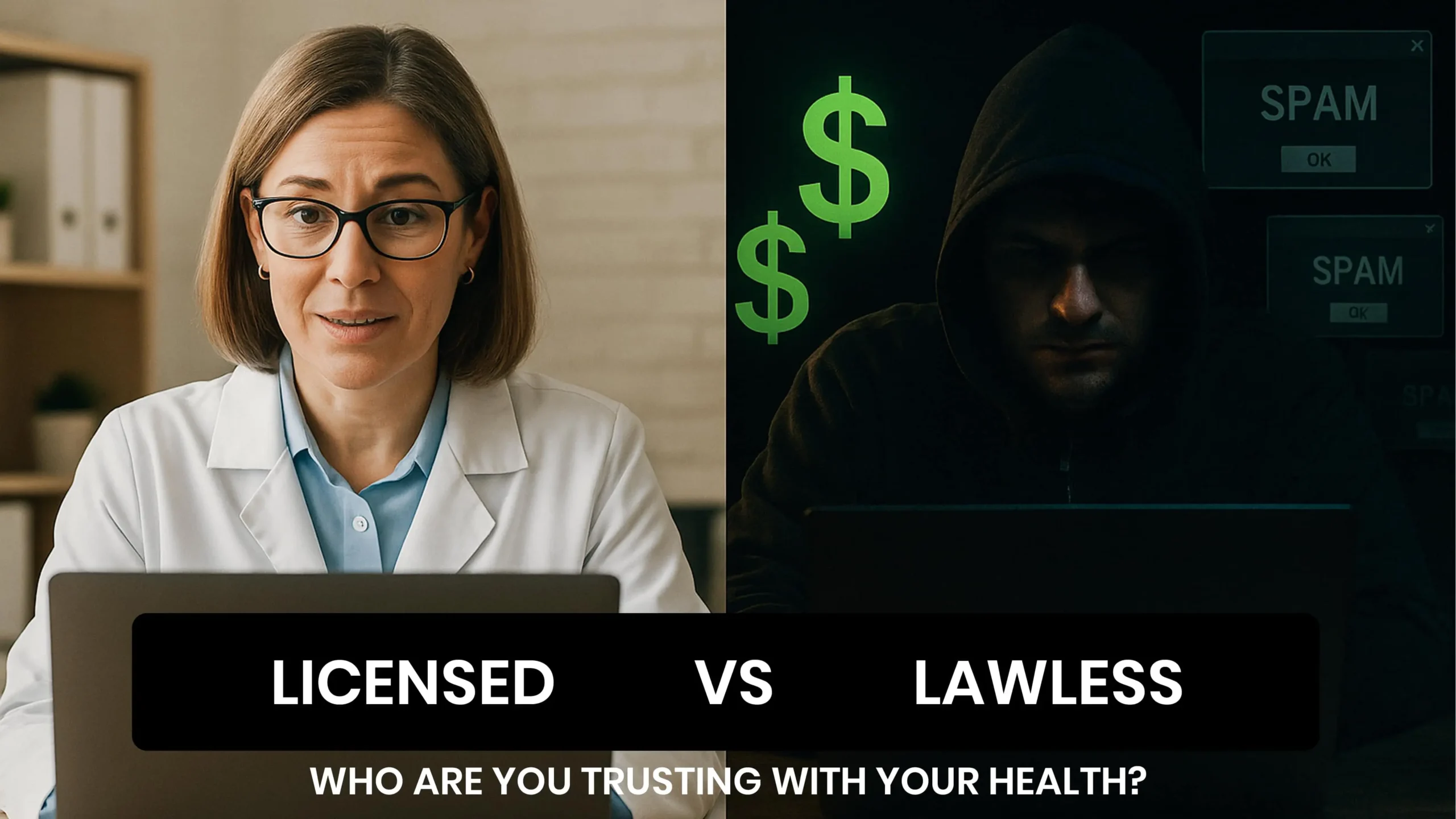
A legitimate online pharmacy will:
- Require a valid prescription
- Clearly display a U.S. address and contact number
- Employ licensed pharmacists for consultation
- Be licensed by a U.S. state board
- Show certifications like the NABP “.pharmacy” seal or CIPA (Canada)
- Use secure HTTPS payment systems
Red flags to avoid:
- No prescription required
- Prices too good to be true (especially for controlled drugs)
- No verifiable contact details
- Shady ads via email or pop-ups
- Claims to sell non-FDA-approved generics
Step-by-Step: How to Buy Cheap Medicine Online Safely
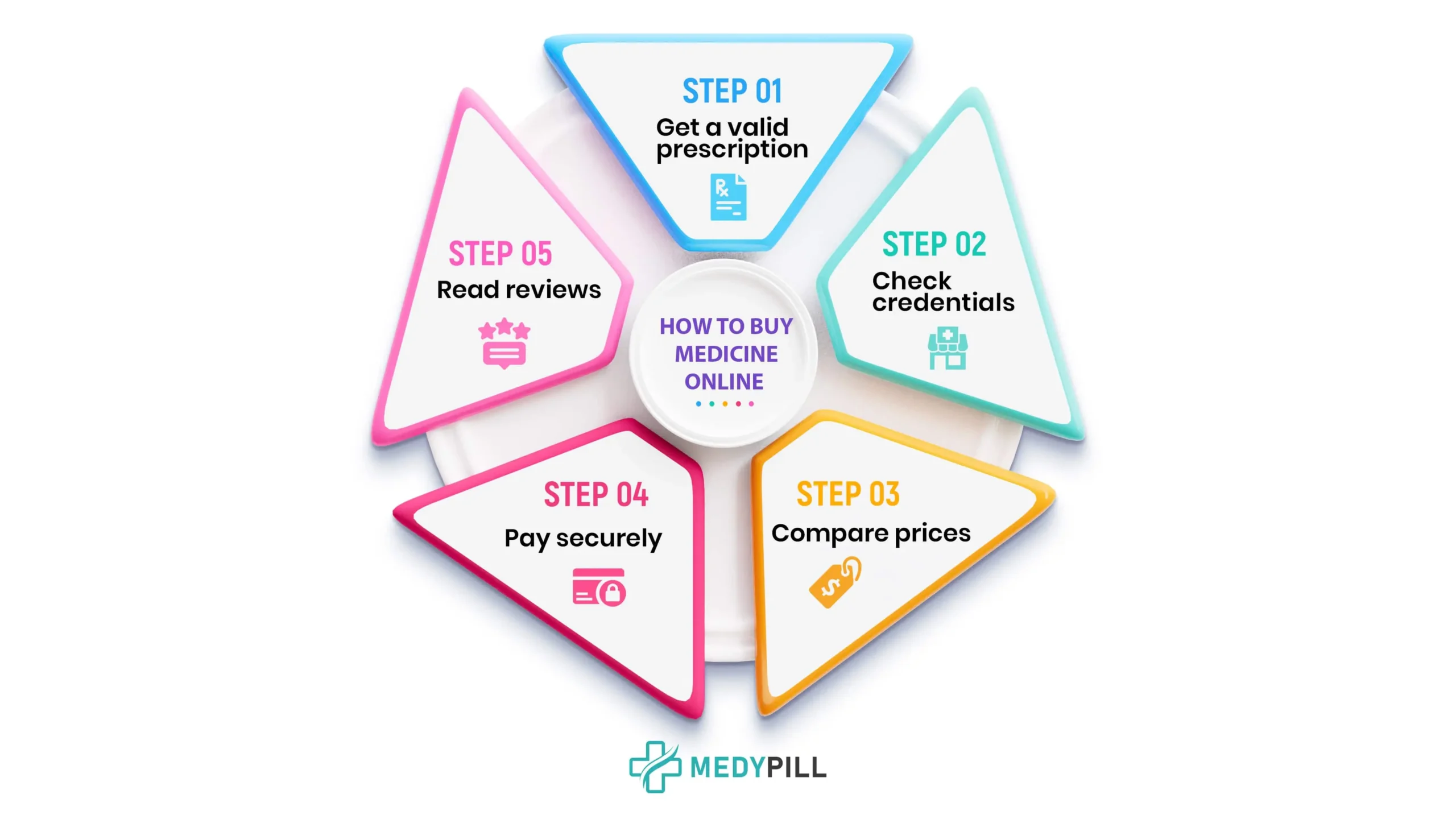
To safely buy cheap medicine online, follow these steps:
1. Get a valid prescription
First, always get a valid prescription from your doctor.
This is not just the legal way, it helps ensure the medicine is right for your condition, dosage, and medical history.
Skipping this step can put your health at risk.
2. Check credentials
Check if the website is licensed. Look for the NABP “.pharmacy” seal for U.S.
sites or CIPA certification for Canadian ones. These badges mean the site meets safety standards and follows regulations.
Avoid websites that hide their contact info or make unrealistic claims.
3. Compare prices
Always compare prices before buying. Generic medications can cost 50–90% less than brand-name ones.
In the U.S., 93% of generic drug copays are under $20.
These savings add up quickly, especially for people with chronic conditions or no insurance.
4. Pay securely
Make sure the website is secure before entering any personal details.
Look for HTTPS in the URL and use trusted payment methods like credit cards.
Avoid paying through wire transfers, cryptocurrency, or sketchy apps.
5. Read reviews
Read reviews from real users and check independent pharmacy watchdog reports. This gives you a better sense of the site’s reliability.
Also, save your prescription, order confirmation, and receipts in case you need to return the product or report an issue later.
Keep records: Save all receipts and prescriptions.
Common Online Pharmacy Scams & How to Spot Them
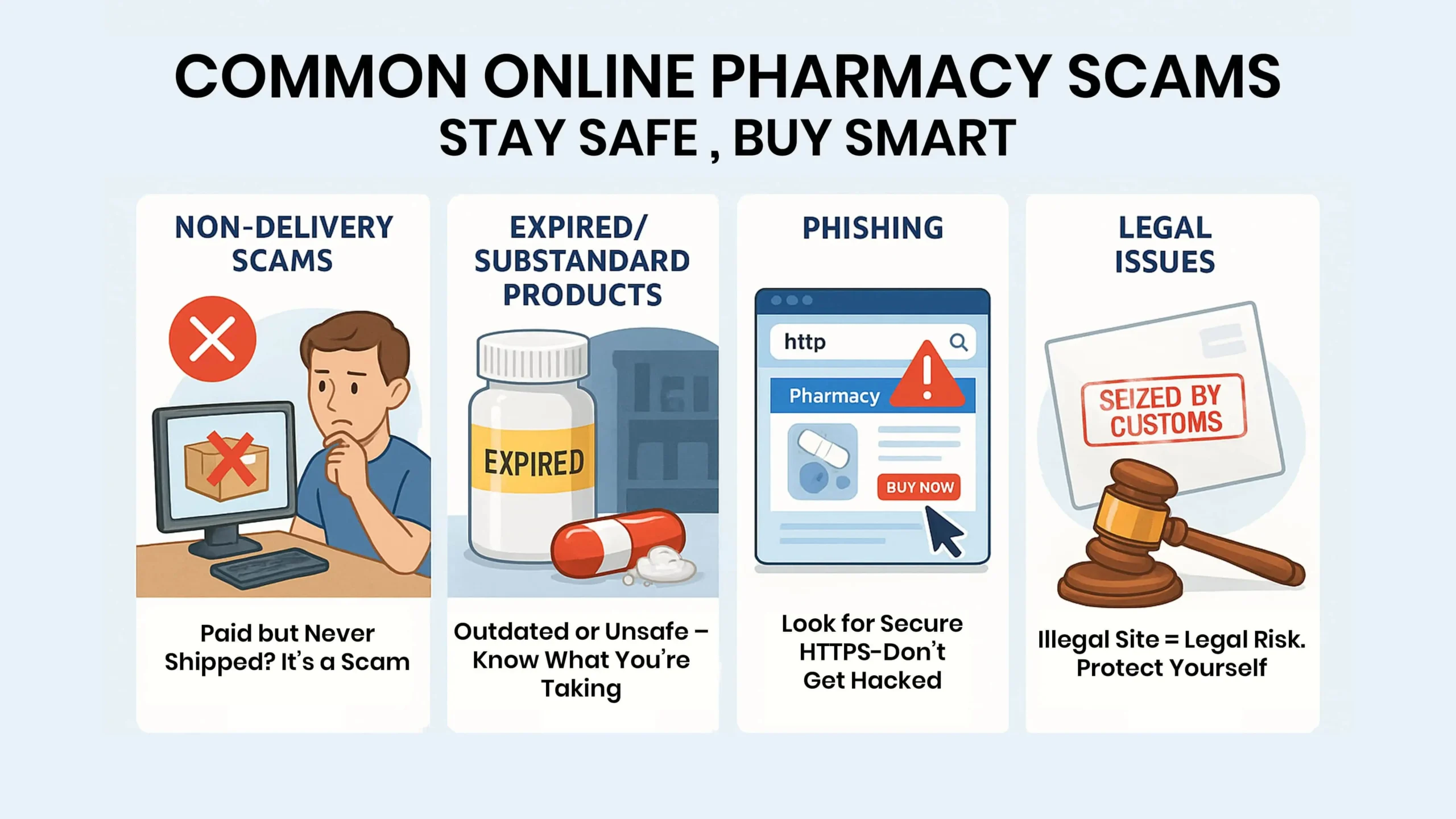
Counterfeit drugs are the most dangerous scam, some contain toxic or wrong ingredients. Roughly 50% of medicines from rogue sites are fake.
Other common scams include:
1. Non-Delivery Scams
Around 1 in 4 online pharmacy complaints involve non-delivery.
You pay, but either the order never arrives or you’re asked to pay extra to release it.
2. Expired/substandard products
WHO says 1 in 10 medicines in low- and middle-income countries is fake or below standard.
Many come from unregulated facilities with poor storage.
3. Phishing
Fake sites often mimic real pharmacies to steal your personal and card info.
These scams are common and lead to financial loss or identity theft.
4. Legal issues
Buying from illegal sites can lead to your package being seized at customs or worse, legal action under U.S. federal law.
Generic vs. Brand-Name: Saving More on Cheap Medicine Online
Generic drugs are just as effective as brand-name ones but cost much less. They meet the same safety and quality standards.
Most people in the U.S. now use generics, and many pay less than $20 per prescription.
Here are the savings:
- Average generic copay: $6.16
- Average brand-name copay: $56.12
Buying generics online from licensed pharmacies is one of the best ways to save.
Best Trusted Sites to Buy Cheap Medicine Online
Here are trusted online pharmacies in different regions, based on credentials and regulatory approvals:
United States
- Walgreens, CVS, Rite Aid
- These are NABP-approved and require prescriptions for all orders.
Canada
- CanadaDrugs.com, Well.ca
- Verified under CIPA, which ensures safety and compliance.
India
- Apollo Pharmacy, Netmeds, Truemeds, Medypill
- All are CDSCO-registered and follow MeITY guidelines. Medypill is gaining trust for an affordable, prescription-based online service.
UK/EU
- Boots, Pharmacy2U, LloydsPharmacy
- Licensed under the MHRA with verified distance-selling approval.
No matter where you’re ordering from, always double-check licenses and seals before placing an order.
Conclusion
Buying cheap medicine online is a great way to cut costs, but only if you do it safely.
Stick to licensed, accredited pharmacies that require prescriptions and clearly display their credentials.
Avoid shortcuts that could risk your health or land you in legal trouble.
When in doubt, ask your doctor and check official pharmacy verification lists. Safe choices save both money and lives.
FAQs
Is it safe to buy cheap medicine online?
Yes, it’s safe if you use licensed, accredited pharmacies that require a valid prescription and clearly show contact information and certifications like NABP or CIPA. Avoid sites that don’t ask for prescriptions or offer extremely low prices with no verification.
Why is buying medicine online becoming more popular?
As of 2023, over 52% of Americans have bought medicine online, driven by convenience and cost savings. Generic drugs now make up 91% of prescriptions, showing a growing demand for affordable options.
What are the risks of buying medicine online?
Risks include counterfeit drugs, expired or substandard products, scams like non-delivery, phishing, and even legal trouble if you purchase from unlicensed or foreign websites that don’t follow U.S. law.
Is it legal to buy prescription drugs online?
Yes, but only from U.S.-licensed pharmacies that require a valid prescription, employ licensed pharmacists, and are registered with state boards. It is illegal to buy from unlicensed sites or those that don’t ask for a prescription.
How can I tell if an online pharmacy is safe?
Look for signs like a valid prescription requirement, a real U.S. address and phone number, secure HTTPS checkout, and certifications like NABP’s “.pharmacy” seal or Canada’s CIPA logo. Avoid websites with no contact details or overly cheap offers.
What’s the best way to buy cheap medicine online safely?
Follow these steps: get a prescription from your doctor, check if the site is licensed, compare prices, pay using secure methods (like credit cards), and read reviews before placing your order.
What are common online pharmacy scams?
The most common scams include counterfeit medicine, non-delivery after payment, expired drugs, phishing for personal info, and legal problems if customs seizes an illegal shipment.
Are generic drugs really as effective as brand-name ones?
Yes. Generics have the same active ingredients, strength, and quality standards as brand-name drugs but cost much less. The average U.S. copay is $6.16 for generics versus $56.12 for brand names.
What payment methods should I use when buying medicine online?
Always use secure payment methods like credit or debit cards on websites with HTTPS protection. Avoid wire transfers, cryptocurrency, or any site that feels suspicious or doesn’t offer payment protection.
Which websites are trusted for buying cheap medicine?
Trusted sites include Walgreens, CVS, and Rite Aid in the U.S.; CanadaDrugs.com and Well.ca in Canada; Medypill, Apollo, and Netmeds in India; and Boots and LloydsPharmacy in the UK. Always check that the pharmacy is verified and licensed before buying.
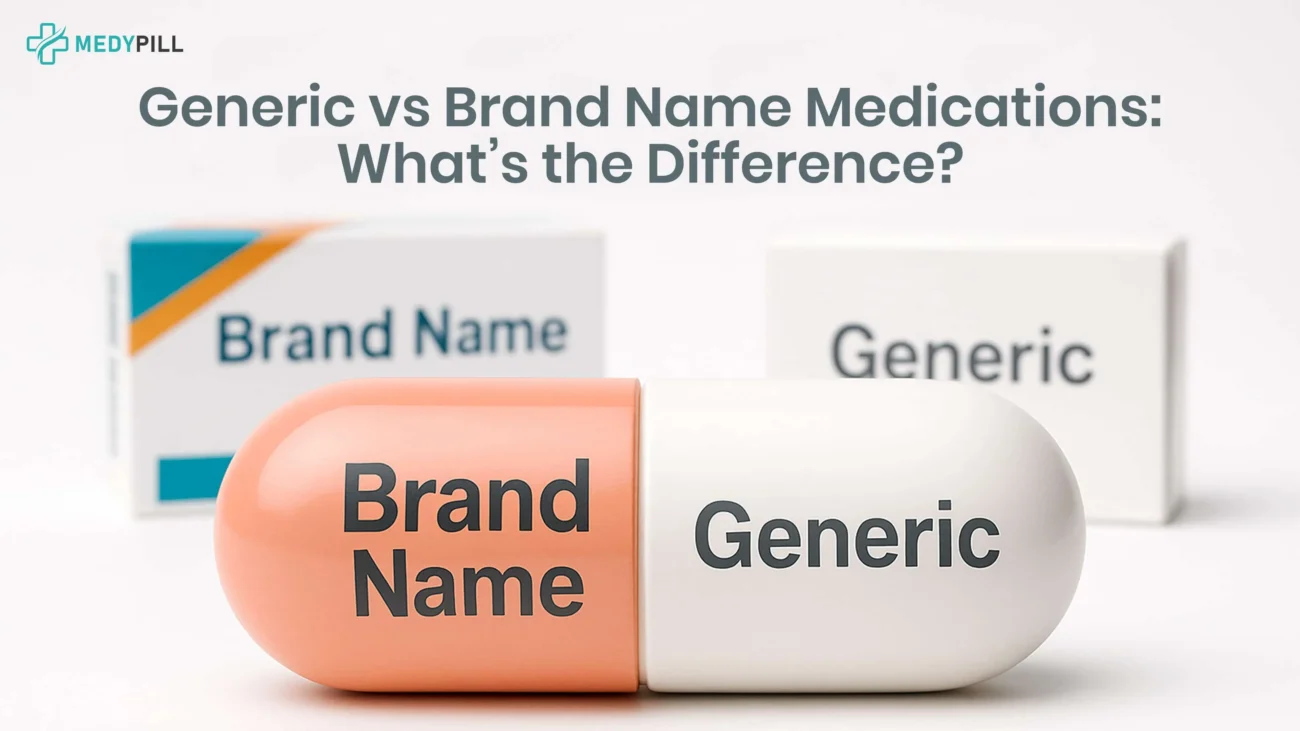
Aug 12, 2025
Generic and brand name medications work the same. They treat the same conditions and use the same main ingredients. The big difference is price generics…
VIEW DETAILSAug 12, 2025
Fenbendazole is not considered safe for human use according to the FDA and major medical bodies. While some people are…
Aug 12, 2025
Semaglutide helps people lose weight by lowering hunger and making them feel full for longer. It’s available as a weekly…

